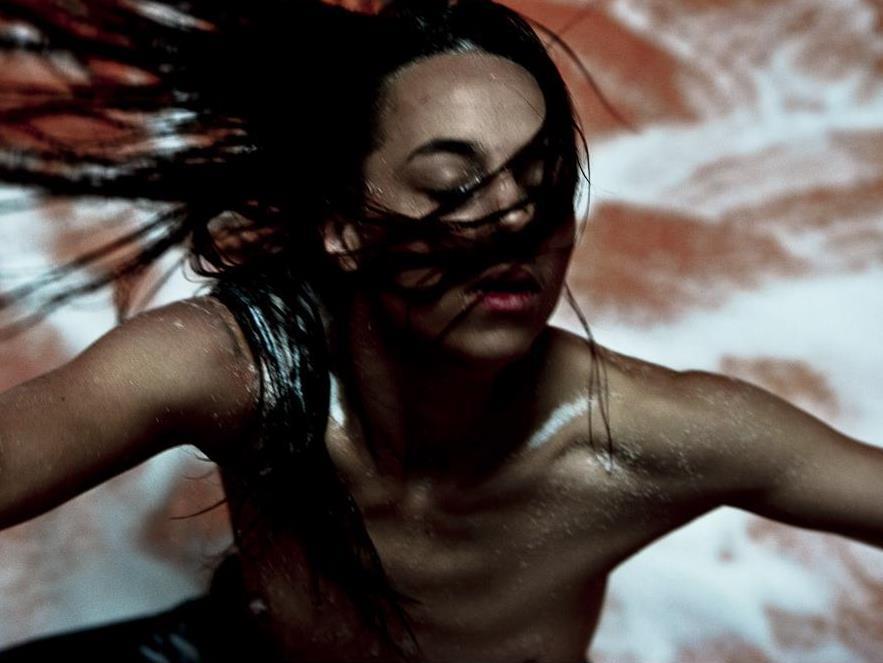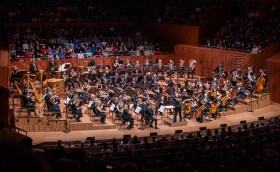Image by Gregory Lorenzutti.
White Face is a performance piece that combines contemporary dance, monologue and experimental theatre to produce something else entirely. Accompanied by Ryl Harris, Carly Sheppard embarks on her first independent production in her performative work that addresses her own personal experiences as a fair-skinned Aboriginal. She dons a character who goes through a journey, with perhaps more lows than highs. Rather than making a bold statement, White Face is more of an interpretative piece that provokes questions about Australia’s distinct racial norms.
White Face begins with Sheppard’s character dancing alone onstage to complete silence — a solitary beam of light shines on her, casting shadows on the wall tower over her small frame. It is almost chilling to see the deliberate stammers and repetition of physical expressions from a solitary figure. Gradually, the lighting brightens to reveal her partner watching her every move. The pair begin to oppose each other’s movements before eventually performing in synchronisation. Sheppard’s beautiful choreography packs so much depth — their movements are deeply engaging, the symmetry is stunning.
White Face‘s minimal music, and often, no music at all, is occasionally accented by audible pants from the pair. This emphasis on the performers’ physicality becomes increasingly more jarring and poignant as the show progresses. Daniel Anderson’s lighting design is understated, but effective. The use of shadows that bookends the performers is enthralling and visually satisfying.
White Face arguably falters in certain aspects of the show. The duo spend a huge portion of White Face bent over with their legs straight, their hips swaying as their hands scramble over the floor. Their crouched postures does bear similarities to some form of pilates, which unfortunately overshadows its likely commentary on their degraded positions. The use of physical props like sand and black masks to symbolise traditional elements of Aboriginal history is quite clever, but also perhaps, a bit of a tired cliché.
At one point, Sheppard’s character stops dancing and breaks into a monologue on her discovery of her Aboriginal ancestry. ‘So yeah, I went down to Centrelink to claim some Abo money, you know,’ she says, in an exceptionally bogan voice. It is pretty amusing to see Sheppard portraying a poor stereotype of a fair-skinned Aboriginal, but it speaks volumes about authenticity when it comes to the issue of race.
Through its vivid bodily movements and daring originality, White Face deliberately blurs the boundaries between black and white; the old and the new. It tends to waver between opposing camps, rather than show support or go on a path of destruction. White Face‘s irresolute position could be seen as frustrating, but it shines as a haunting production piece; its commentary on the modern Aboriginal Australian is truly evocative.
Rating: 3 ½ of 5 stars
White Face
Footscray Community Arts Centre, Moreland St, Footscray
Next Wave Festival
www.footscrayarts.com
6-11 May





